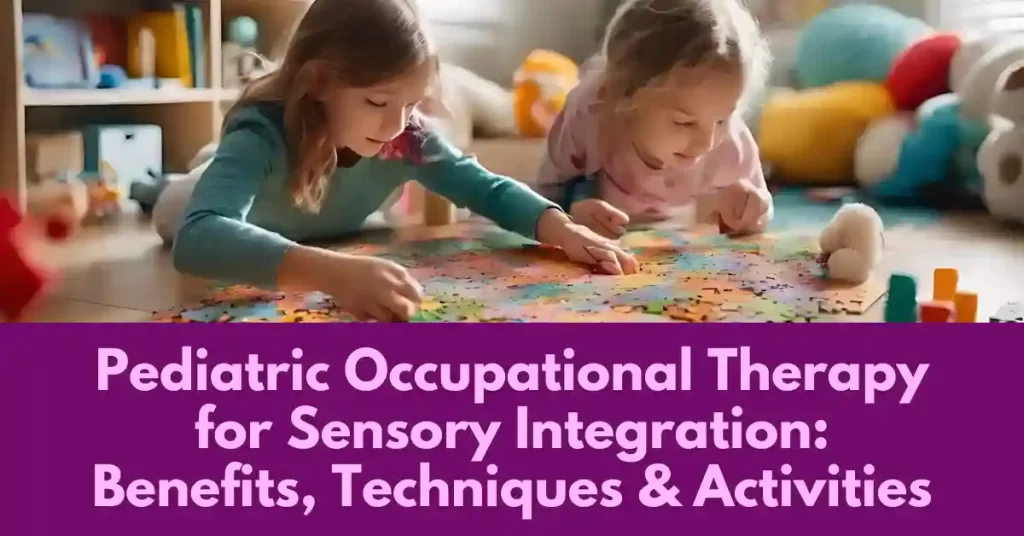Pediatric Occupational Therapy for Sensory Integration: Benefits, Techniques & Activities
All children interpret the world by using their senses while some children manage sensory information with difficulty. The essential part of pediatric occupational therapy for sensory integration emerges at this point. Youngsters who have sensory processing disorders show extreme or completely flat reactions to both auditory stimuli and physical touch as well as movement and visual inputs.
The application of targeted occupational therapy approaches by therapists allows children to enhance their interpretation and response to sensory signals which improves their daily ability as well as their focus and learning potential and social interactions.
What Is Sensory Processing Disorder?
Sensory Processing Disorder (SPD) represents a condition which makes the brain inefficient at processing sensory data received from the body. SPD creates difficulties for children to interact with sounds, touch, and movement and other sensory inputs. SPD patients either feel stimulus too intensely (hypersensitivity) or not intensely enough (hyposensitivity) which interferes with their learning activities and everyday routines and motor skills practice.
Children with autism spectrum disorder (ASD) and attention deficit hyperactivity disorder (ADHD) develop SPD together with other developmental disorders while this condition seems to target single or multiple senses during development. The occupational therapy for sensory issues approach derived from occupational therapy helps manage sensory symptoms and works to enhance functional performance although it lacks full medical diagnosis recognition.
Occupational therapists assist children through sensory integration intervention to develop their ability to respond to different sensations while building tolerance for them so they can actively participate in everyday life activities.
Common Signs of Sensory Processing Issues
Identifying sensory processing difficulties early is essential for effective intervention. Common signs include:
- Oversensitivity to sounds, textures, or light
- Difficulty with gross motor tasks like walking or balancing
- Avoiding messy activities such as finger painting
- Frequent meltdowns in response to sensory overload
- Constantly seeking movement or deep pressure
- Challenges in transitioning between activities
These behaviors may seem like misbehavior or anxiety but could signal sensory challenges. Children may also struggle with pair share activities in learning environments, have poor coordination, or display inconsistent attention spans.
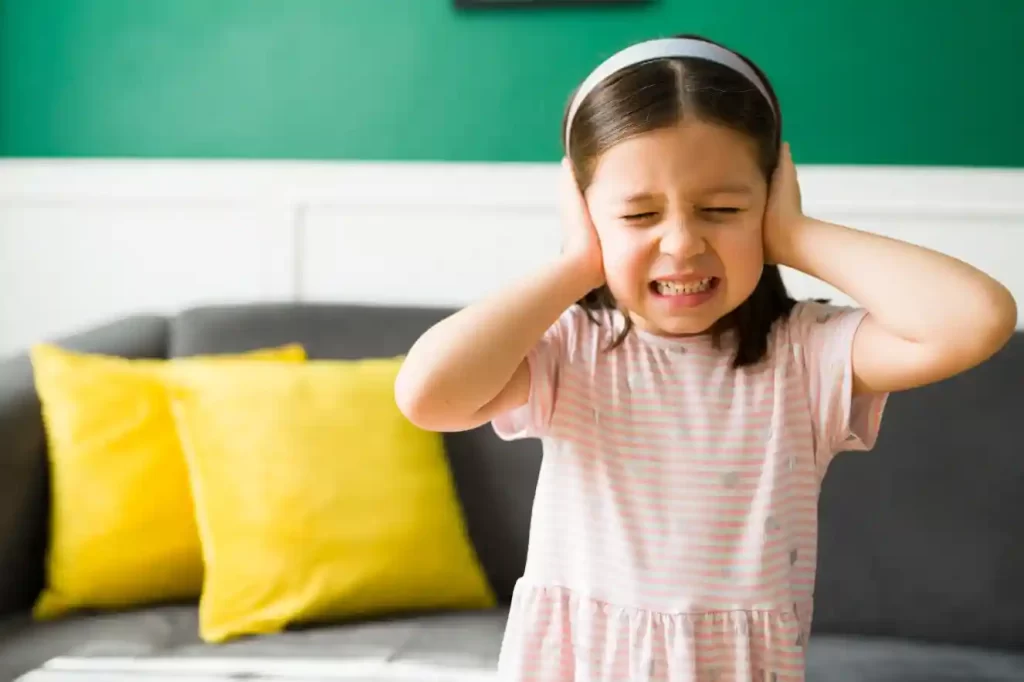
A pediatric occupational therapist evaluates children who show ongoing symptoms by creating specialized occupational therapy activities for kids to meet their unique sensory requirements.
Therapy immediately followed by early detection enhances children’s reaction to sensations which results in improved social abilities and greater emotional control as well as enhanced academic performance.
The Role of Occupational Therapy in Treating Sensory Processing
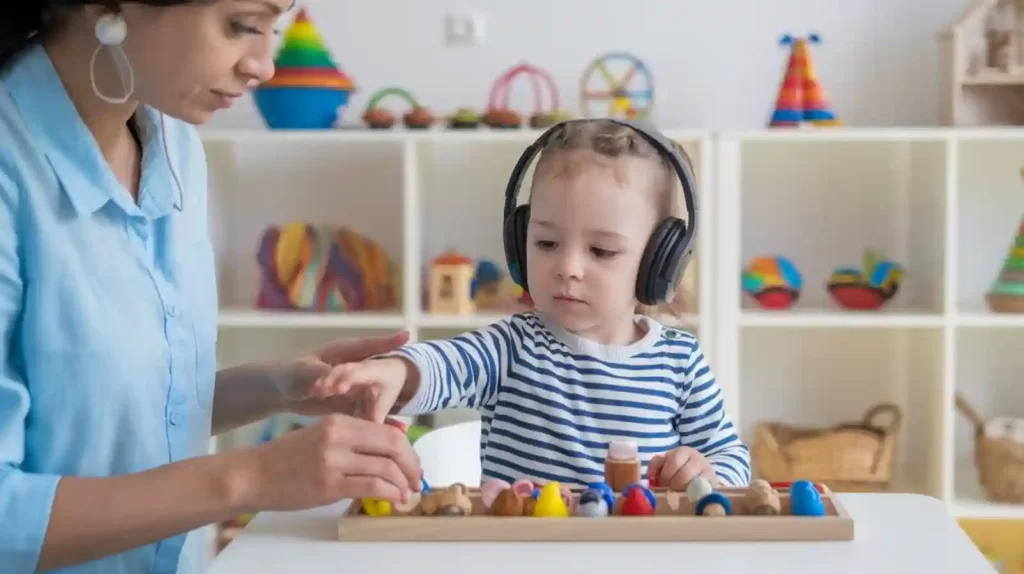
Occupational therapy delivers crucial help for children to control sensory processing disorder through particular methodologies which optimize sensory reaction outcomes. An occupational therapist who has received specialized training evaluates how children respond to sensory inputs that include touch and movement along with sound and vision. Occupational therapists generate custom-made plans after evaluation to enhance sensory management alongside functional achievements.
Sensory integration therapy stands among the vital elements because it incorporates strategically planned exercises to test sensory responses in children. The therapeutic activities developed to enhance motor skills promote balance abilities together with body perception and focus duration.
Pediatric therapists use a planned approach (OT for sensory issues) to introduce sensory stimuli to children under supervised conditions through therapy sessions. Occupational therapy concentrates on teaching children to adapt to their environment together with improved social communication in school playgrounds and home environments.
Through pediatric occupational therapy for sensory integration children gain independence besides building confidence and resilience which serve as essential developmental traits.
Benefits of Occupational Therapy for Sensory Integration
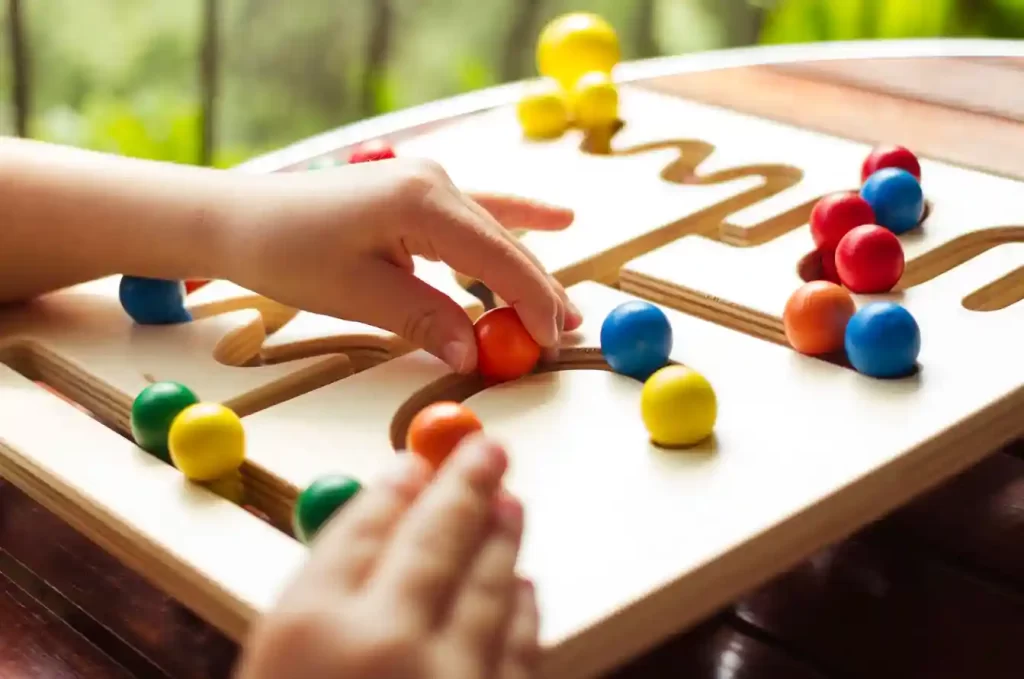
Children who undergo pediatric occupational therapy for sensory integration experience significant improvements in various areas of development. Key benefits include:
- Better regulation of sensory responses
- Enhanced coordination and gross motor skills
- Improved attention and learning in learning environments
- Reduction in anxiety and behavioral issues
- Increased independence in daily life tasks
Sensory integration therapy helps the brain to process and react to stimuli, hence producing these effects. Children begin to tolerate different textures, sounds, and movements without distress. They become more adaptable and engaged during play and school activities.
According to parents reports, Occupational therapy for sensory issues results in better routines for parents regarding dressing, bathing and eating routines.
By addressing sensory processing difficulties, Occupational therapy delivers complete sensory processing treatment that enables children with sensory integration disorder and empowers their participation in environmental interactions and hence occupational therapy benefits children with sensory integration disorder.
Conditions Treated with Sensory Integration Therapy for Children
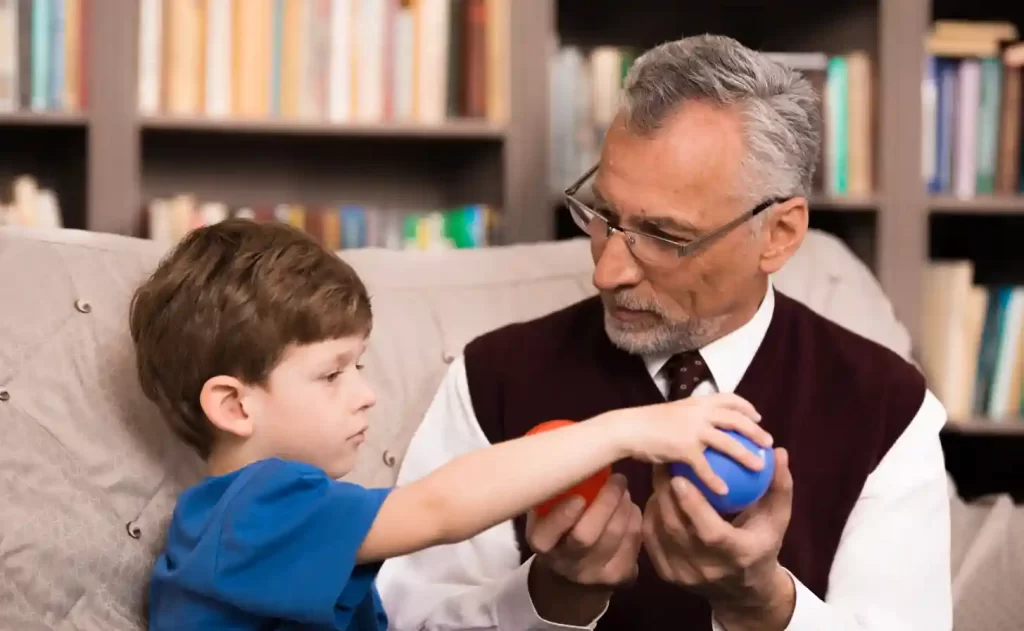
The effectiveness of sensory integration therapy reaches multiple conditions that frequently present sensory processing difficulties. These include:
- Autism Spectrum Disorder (ASD)
- Attention Deficit Hyperactivity Disorder (ADHD)
- Developmental delays
- Cerebral palsy
- Down syndrome
- Premature birth-related sensory issues
These conditions produce motor control difficulties alongside learning activities and behavioral challenges because the patients improperly interpret sensory signals.
Occupational therapy delivers two main goals for patients to build sensory inputs tolerance abilities while actively participating more functionally in their daily life. Different therapy approaches include vestibular sensory input together with proprioceptive activities and deep pressure stimulation and tactile sensory activities specifically designed to help children develop sensory regulation.
For example, Pediatric OT exercises for children with ASD with motor difficulties demonstrate positive effects because they specifically address balance together with posture and body awareness development.
Therapy aims to both handle symptoms and create better life conditions and build independence for the child. Such pediatric occupational therapy for sensory integration performs as an essential element for children’s success in all educational and home and social environments.
Sensory Integration Techniques Used by Pediatric Occupational Therapists
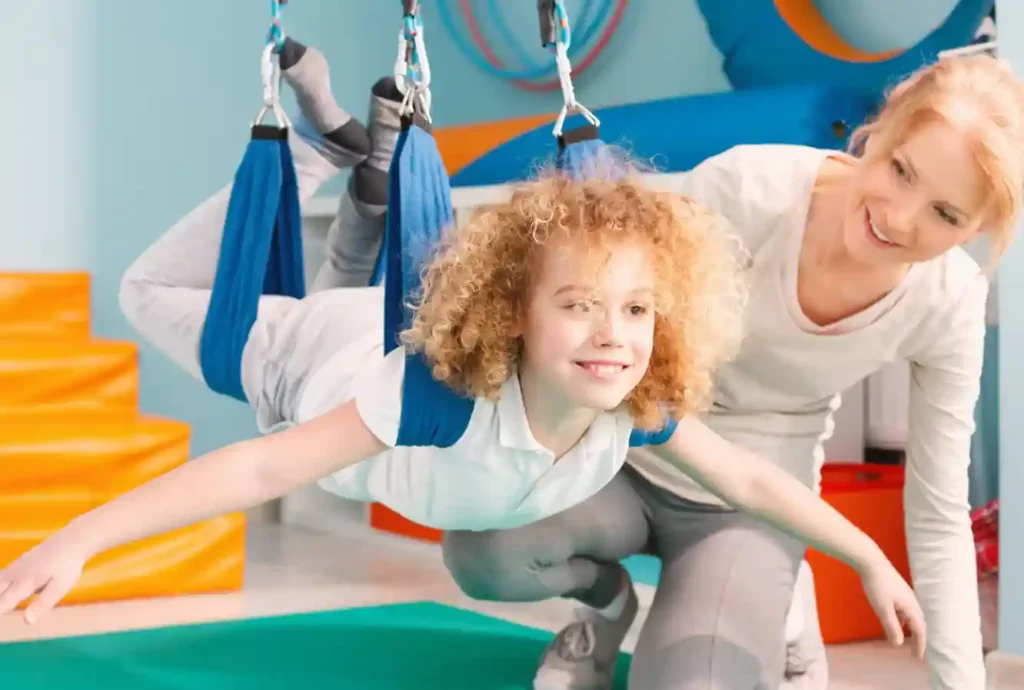
Sensory integration techniques are carefully chosen based on each child’s sensory activity. Some common techniques used by occupational therapists include:
- Swing therapy: Stimulates the vestibular system and improves balance
- Deep pressure stimulation: Provides calming input through weighted blankets or compression garments
- Brushing protocols: Help regulate touch sensitivity
- Obstacle courses: Enhance gross motor and spatial awareness
- Sensory bins: Filled with rice, beans, or foam for tactile sensory activities
These sensory integration intervention methods are structured and goal-driven. For example, therapists may use muddiest point reflection during sessions to identify areas of difficulty and tailor interventions.
When integrated into therapy some children need sensory play therapy to develop their motor skills by engaging with real life simulated activities.
A mix of vestibular and proprioceptive activities help children develop better body awareness and coordination abilities. The activities develop self-regulation abilities and enhance focus skills as well as enhance group participation.
Used consistently in pediatric occupational therapy for sensory integration, these techniques create long-term improvements in how a child interprets and reacts to their environment.
Importance of Creating a Sensory Diet for Children
A sensory diet for children refers to a personalized routine of sensory activities that support regulation and behavior throughout the day. Much like a nutritional diet, a sensory diet provides the right “sensory nutrients” a child needs to stay focused, calm, and engaged.
Created by an occupational therapist, the sensory diet may include:
- Sensory integration techniques like swinging or bouncing before school
- Scheduled tactile sensory activities such as using putty or sand
- Calming Sensory strategies like deep breathing or weighted vests
- Active gross motor tasks to release energy
The key is consistency and integration into the child’s daily routine. A well-designed sensory diet helps manage deficit hyperactivity disorder ADHD symptoms, support motor skills, and reduce meltdowns caused by sensory overload.
Parents and teachers play a vital role in maintaining the routine. Over time, children learn to self-regulate and communicate their sensory needs more effectively.
Whether the goal is to increase attention span or reduce anxiety, a sensory diet for children is a powerful complement to pediatric occupational therapy for sensory integration.
Home-Based Sensory Activities for Children
Sensory integration therapy can best be promoted in children living at home. Everyday items and schedules can be used by parents to invent engaging and successful sensory activities for kids. Below are some simple ideas:
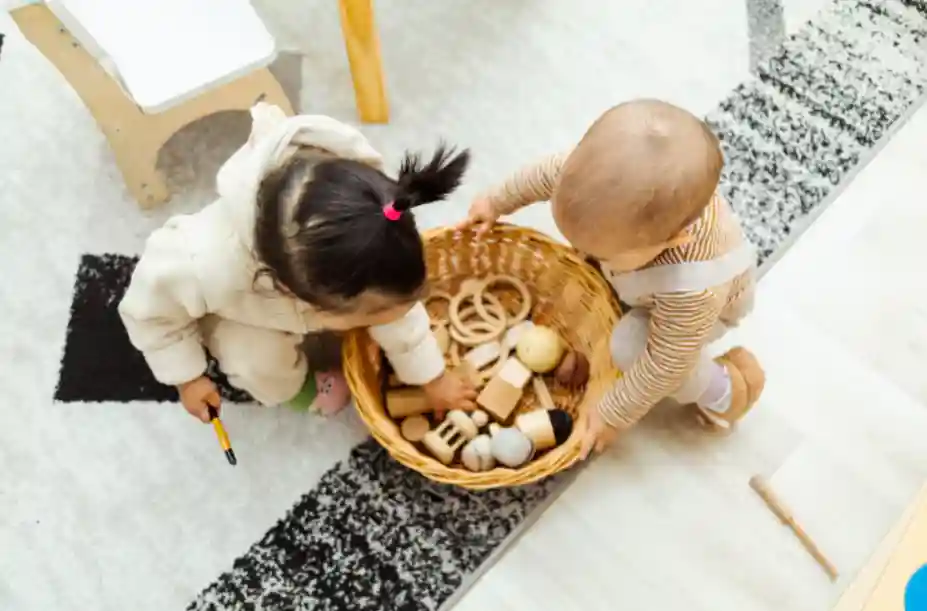
- Tactile Play with Sensory Bins
Perfect for touch sensitivity, put rice, pasta, or legumes in a container for digging and organizing.
- Heavy Work Activities
Let your child carry laundry baskets or push weighted toys to build body awareness.
- Jumping and Bouncing on a Trampoline
Engages vestibular and proprioceptive activities that help calm hyperactivity.

- Obstacle Course at Home
Use cushions, chairs, and tunnels to promote gross motor coordination and movement planning.
- Brushing or Deep Pressure Routine
Follow an occupational therapist-guided brushing protocol to regulate tactile response.
- Water Play and Pouring
Stimulates the sensory system and improves focus while encouraging independent play.
Pediatric occupational therapy for sensory integration receives valuable support through these basic home-based sensory activities for children that they can easily do. Household sensory devices used frequently create benefits for personal regulation while developing better behavior outcomes in both educational settings and domestic environments.
Improving Motor Skills Through Sensory Integration Therapy
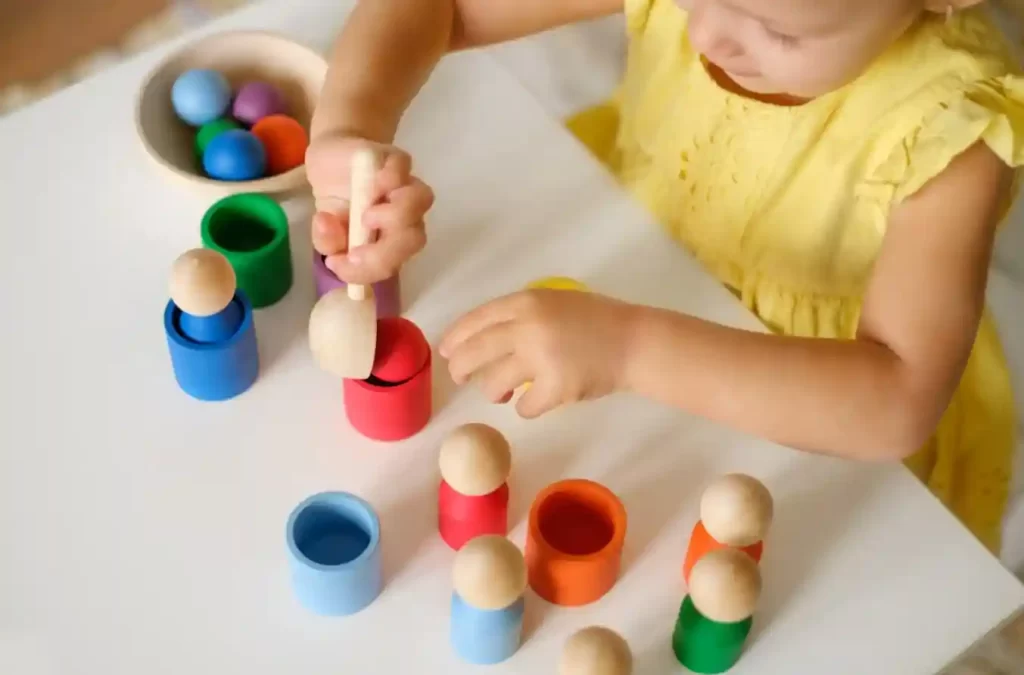
Children with Sensory Processing Disorder commonly struggle with body coordination together with balance issues and overall movements. The role of Pediatric Occupational Therapy for Sensory Integration allows skill enhancement by developing activities which deliver sensory input for gross motor and fine motor development.
Here’s how it helps:
- Hard vestibular and proprioceptive activities that include swinging and balancing as well as jumping activities support the development of body awareness in addition to coordination abilities.
- Playing with textured objects and sand while following tactile sensory activities helps children develop better dexterity control.
- Body stability and posture receive support through obstacle courses training and crawling activations.
- The sensory integration techniques assists children in processing sensory information more efficiently thus improving their ability to plan movements.
- The approach delivers maximum benefit to children with ASD or ADHD since they typically face motor planning challenges.
Through extended usage sensory integration interventions lead toward improved motor skills while simultaneously enhancing skills for daily life activities as well as schooling and social activities with peers.
How to Know if Your Child Needs Sensory Integration Therapy

Identifying the need for pediatric occupational therapy for sensory integration starts by observing how your child responds to daily stimuli. Children who either overreact or underreact to sensory input may benefit from occupational therapy for sensory issues.
Signs your child might need sensory integration therapy:
- Avoids textures, sounds, or light
- Seeks excessive movement like spinning or jumping
- Shows poor motor skills and coordination
- Has difficulty sitting still or paying attention
- Gets overwhelmed easily in loud or busy settings
A professional evaluation by a licensed occupational therapist is the best way to confirm if therapy is needed. Sensory integration techniques are recommended to children through assessment findings derived from structured clinical observations that therapists conduct to determine their sensory profiles.
Children possessing autism spectrum disorder together with ADHD along with additional developmental disorders demonstrate higher risk levels of sensory processing challenges. The quality of results improves when early intervention services start because these environments require adult and child attention along with coordination abilities.
Contact your pediatrician when in doubt because they will guide you to the right source for receiving a pediatric OT referral. Early intervention of sensory processing difficulties will lead to improved comfort levels and enhanced confidence and better everyday life participation for your child.
FAQs
Sensory modulation, sensory discrimination, and sensorybased motor skills development are all parts of sensory integration therapy. Every stage establishes the groundwork for emotional control and practical independence.
Swinging, brushing therapy, joint compressions, and obstacle courses are among the standard sensory integration techniques for autism. The stimulate helps to manage sensory perception and motor control difficulties in children with ASD.
Parents can work together with occupational therapists, develop a well structured sensory diet for children and provide daily sensory processing disorder activities. One should match the needs of children, including organizing, calming, or alerting activities.
Signs include extreme sensitivity to textures or sounds, clumsiness, poor coordination, and constant seeking of movement or pressure. These indicate possible issues in the child’s sensory system.
Look for licensed pediatric occupational therapists experienced in sensory integration therapy in children. Ask about therapy approaches, parental involvement, and outcome tracking. A good therapist will create an engaging plan aligned with your child’s unique challenges.

